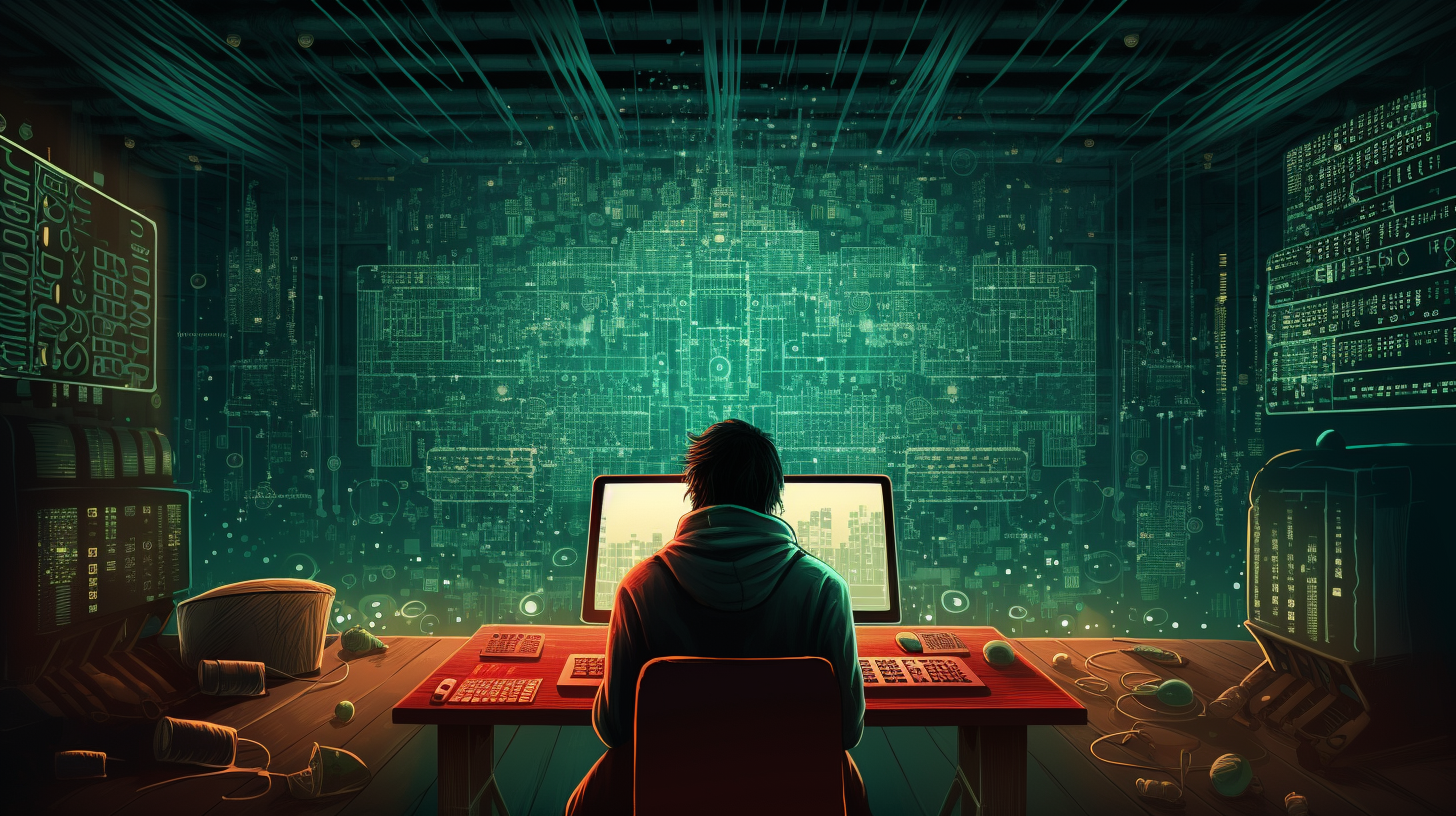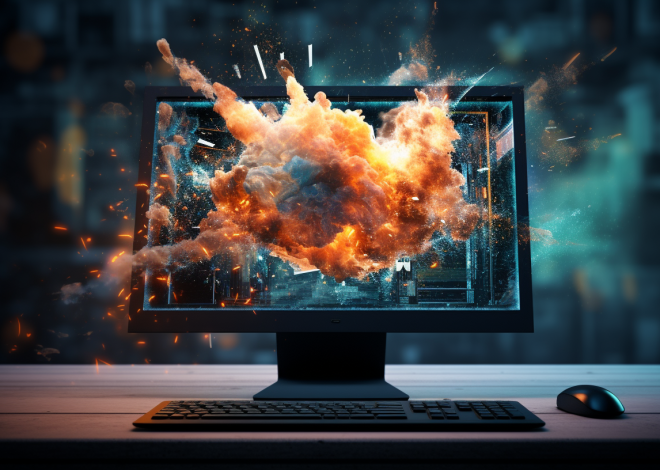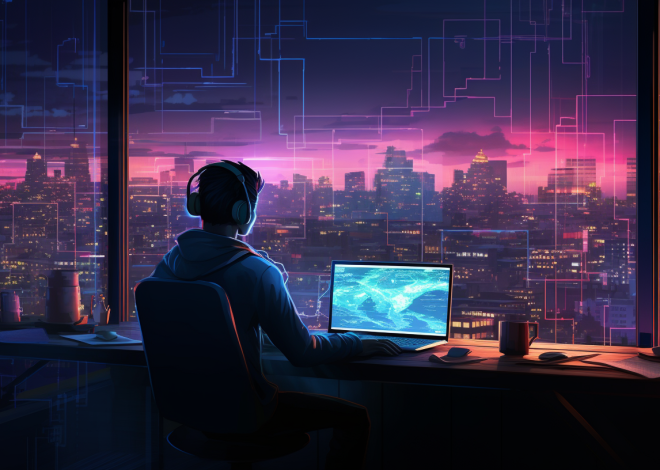
Python and Virtual Reality: Getting Started
Virtual Reality (VR) is a transformative technology that immerses users in a computer-generated environment, simulating a sense of presence and engagement that feels tangibly real. By using the dynamic visual and auditory capabilities of modern hardware, VR creates a unique experience where users can interact with 3D spaces in ways that challenge traditional boundaries of perception.
At its core, VR operates on principles derived from various fields, including computer graphics, sensory perception, and human-computer interaction. The experience hinges on two primary components: rendering and interaction. Rendering involves creating a 3D environment that can be visually explored, while interaction allows users to engage with that environment seamlessly.
To fully appreciate the essence of VR, one must understand the concepts of tracking and immersion. Tracking refers to the ability of the system to monitor the user’s movements and adjust the virtual environment accordingly. This includes head tracking, hand tracking, and even full-body tracking, which creates a more realistic interaction as users navigate through the digital space. Immersion, on the other hand, is the sensation of being surrounded by the virtual environment, which can be enhanced through the use of stereoscopic displays, spatial audio, and haptic feedback.
Python, while not traditionally associated with high-performance graphics rendering, can still play an important role in VR development through its simplicity and versatility. With the right libraries and frameworks, Python can be used to create impressive VR applications that leverage the power of existing engines and hardware.
To illustrate the foundational concepts of VR in Python, think the following example, which showcases a simple setup of a VR scene using the Vizard library:
import viz import vizshape # Initialize the Vizard environment viz.go() # Create a simple plane to represent the ground ground = vizshape.addPlane(size=(10,10)) ground.setPosition(0,-0.5,0) # Create a simple cube for the user to interact with cube = vizshape.addCube(size=1) cube.setPosition(0,0.5,0) # Add a light source light = viz.addLight() light.setPosition(0,5,0)
In this code snippet, we establish a basic VR environment that includes a ground plane and a cube. The viz module is used to handle the VR scene, and the vizshape module enables us to create 3D objects. By manipulating the properties of these objects, developers can create a rich, interactive atmosphere where users can explore and manipulate the environment.
Setting Up Your Python Environment for VR
Before diving into VR development with Python, it’s essential to set up an environment tailored to handle the unique demands of virtual reality applications. Setting up your Python environment properly will ensure that you have the necessary tools at your disposal to create immersive experiences without unnecessary friction.
The first step is to install Python itself. While any version from Python 3.x should suffice, it is recommended to use the latest stable release to take advantage of the most recent features and improvements. You can download Python from the official website and follow the installation instructions for your operating system.
Once Python is installed, you should ponder using a virtual environment. Virtual environments are crucial in isolating your project dependencies, ensuring that libraries for different projects do not conflict. You can create a virtual environment using the built-in venv module. Here’s how you can set it up:
# Create a new directory for your VR project mkdir my_vr_project cd my_vr_project # Create a virtual environment python -m venv venv # Activate the virtual environment # On Windows venvScriptsactivate # On macOS/Linux source venv/bin/activate
With your virtual environment active, the next step is to install the libraries and frameworks that will facilitate VR development. One of the most popular choices for VR in Python is OpenVR, which provides access to the VR hardware on your system. You can install it via pip:
pip install openvr
In addition to OpenVR, you might want to ponder using Pygame for handling user input and rendering. Pygame is a set of Python modules designed for writing video games, but its capabilities extend nicely into VR development as well:
pip install pygame
Once your essential libraries are installed, you can also explore other frameworks such as Vizard, Unity with Python for Unity, or Godot with GDScript. These may require additional setup, but they provide extensive functionalities tailored for immersive environments.
After establishing your environment and installing the necessary libraries, it’s crucial to test your setup. You can create a simple script that initializes a VR session using OpenVR to ensure that everything is functioning correctly. Here’s a basic example:
import openvr
# Initialize OpenVR
vr_system = openvr.init(openvr.VRApplication_Scene)
# Check if the VR system is ready
if vr_system:
print("VR System initialized successfully.")
else:
print("Failed to initialize VR System.")
# Shutdown OpenVR
openvr.shutdown()
By executing this script, you should see a confirmation indicating that the VR system is initialized successfully. Should you run into issues, double-check your installations and ensure your VR hardware is properly connected and recognized by your operating system.
Key Libraries and Frameworks for VR Development
When it comes to developing virtual reality applications with Python, using the right libraries and frameworks is essential for creating immersive experiences. Several options cater to different aspects of VR development, each with its strengths and capabilities. Understanding these tools will set the foundation for your VR journey.
One of the most notable libraries is OpenVR, which serves as an interface to VR hardware, allowing developers to access features from various VR headsets. OpenVR is particularly useful for applications that need to communicate with devices from multiple manufacturers, making it a versatile choice. Here’s how you can use OpenVR to interact with VR devices:
import openvr
# Initialize OpenVR
vr_system = openvr.init(openvr.VRApplication_Scene)
# Get the VR system's device count
device_count = openvr.VRSystem().getSortedTrackedDeviceIndicesOfClass(openvr.TrackedDeviceClass_Controller)
print(f"Number of VR controllers detected: {len(device_count)}")
# Shutdown OpenVR
openvr.shutdown()
In this snippet, we initialize OpenVR and check how many VR controllers are connected to the system. This can be foundational for understanding how to handle user input in VR.
Another popular library is Pygame, which is known for its simplicity and ease of use when it comes to game development. While not VR-specific, Pygame excels at handling user inputs and rendering graphics, which can be beneficial when combined with VR libraries. An example of setting up a basic Pygame window is shown below:
import pygame
from pygame.locals import *
# Initialize Pygame
pygame.init()
# Set up display
screen = pygame.display.set_mode((800, 600))
pygame.display.set_caption('VR Pygame Window')
# Main loop
running = True
while running:
for event in pygame.event.get():
if event.type == QUIT:
running = False
# Fill the screen with a color
screen.fill((0, 0, 0))
pygame.display.flip()
pygame.quit()
This basic Pygame window serves as a foundation where you can later integrate VR functionalities and user interactions. Furthermore, Pygame handles input events smoothly, which is critical for responsive VR interactions.
For developers looking to create more complex VR applications, Vizard stands out as a dedicated VR development platform. Built specifically for VR applications, Vizard supports 3D visualization, physics, and user interaction out of the box. Here’s how you can set up a simple scene using Vizard:
import viz
import vizshape
# Initialize the Vizard environment
viz.go()
# Create a 3D environment
skybox = viz.add('skybox.jpg')
ground = vizshape.addPlane(size=(10, 10))
ground.setPosition(0, 0, 0)
# Add an interactive object
cube = vizshape.addCube()
cube.setPosition(0, 0.5, 0)
In this case, Vizard makes it easy to create a 3D environment by which will allow you to add a skybox and interactive objects with minimal effort. This streamlined approach to VR scene creation can greatly enhance productivity.
Besides these libraries, exploring Godot and its GDScript language can also be advantageous for VR development, as it provides a robust game engine environment that integrates well with VR frameworks. While Godot doesn’t use Python directly, it allows Python scripting through third-party plugins, opening up more options for VR developers.
Creating Your First Virtual Reality Experience
Creating your first virtual reality experience in Python involves combining several components to establish a basic yet interactive environment. Building on the foundations laid by libraries like OpenVR and Vizard, we can develop a simple VR application that immerses users in a virtual world. This application will include a 3D scene with interactive elements, allowing users to navigate and manipulate objects within that space.
Let’s start by creating a basic VR scene using the Vizard library, which is well-suited for this purpose due to its simple to operate interface and robust capabilities. Below is an example script that sets up a simple virtual environment with a ground plane and a few interactive objects:
import viz import vizshape # Initialize the Vizard environment viz.go() # Create a ground plane ground = vizshape.addPlane(size=(10, 10)) ground.setPosition(0, 0, 0) # Create a cube and a sphere for interaction cube = vizshape.addCube(size=1) cube.setPosition(0, 0.5, 0) sphere = vizshape.addSphere(radius=0.5) sphere.setPosition(2, 0.5, 0) # Add a light source light = viz.addLight() light.setPosition(0, 5, 0) # Set up the user's viewpoint viz.MainView.setPosition(0, 1.6, 3)
In this script, we begin by initializing the Vizard environment with `viz.go()`, which sets up the rendering context. Next, we create a ground plane to serve as the floor, followed by a cube and a sphere that users can interact with. The positioning of these objects is important for defining the spatial relationship within the VR environment.
We also add a light source to illuminate the scene and set the user’s viewpoint to improve the immersive experience. This initial setup provides a canvas on which we can build further interactions.
To add interactivity, we can modify the script to respond to user input. Below, we will incorporate a simple interaction that allows the user to change the color of the cube when they look at it and press a key:
def changeColor():
# Change the cube's color when it's looked at
cube.color(viz.RED)
# Create a simple event listener for user input
vizact.onkeydown('c', changeColor)
In this example, we define a function `changeColor` that changes the cube’s color to red when called. The interaction is triggered by the user pressing the ‘c’ key. The function is linked to the key press using Vizard’s `vizact.onkeydown` function. This simple interaction showcases how users can manipulate elements in the environment, enhancing engagement and immersion.
Moreover, you can extend this basic application by incorporating additional interactive elements, such as rotating objects or scaling them based on user input. By using the tracking capabilities of VR devices, you can make the experience even more dynamic, allowing users to reach out and physically interact with the virtual objects.
Interactivity and User Input in VR Applications
When designing virtual reality applications, the interactivity and user input mechanisms are paramount, as they define how users engage with the virtual environment. In VR, the goal is to create a seamless interaction model where users feel as if they are genuinely part of the experience, rather than merely observers. This requires a careful balance of tracking user movements and interpreting their actions effectively.
One of the fundamental concepts in VR interactivity is the use of controllers and input devices. These tools allow users to manipulate the virtual world through gestures, button presses, or even gaze-based actions. For instance, many VR headsets come equipped with motion controllers that track the user’s hand movements. This tracking capability is essential for creating a sense of presence and agency within the VR environment.
To illustrate how to capture user input in a VR application using Python, let’s think an example that integrates OpenVR for controller input handling. Here’s how you can detect when a user presses a button on their VR controller:
import openvr
import time
# Initialize OpenVR
vr_system = openvr.init(openvr.VRApplication_Scene)
# Main loop for checking controller state
while True:
# Retrieve the state of the controller
state = openvr.VRSystem().getControllerState(openvr.k_unTrackedDeviceIndex_Hmd)
if state:
# Check if the trigger button is pressed
if state.ulButtonPressed & openvr.ButtonMaskFromId(openvr.k_EButton_SteamVR_Trigger):
print("Trigger button pressed!")
# Sleep for a short duration to avoid overwhelming the system
time.sleep(0.1)
# Shutdown OpenVR
openvr.shutdown()
In this example, we initialize the OpenVR library and enter a loop that continuously checks the state of the VR controller. By checking if the trigger button is pressed, we can trigger actions within our VR application, such as interacting with objects or initiating events. The `time.sleep(0.1)` statement helps to reduce CPU usage by pausing for a brief moment during each iteration.
Besides button presses, gaze-based interactions are becoming increasingly popular in VR. This method relies on where the user is looking to determine interactions, which can be particularly useful in applications where hands-free control is desired. Integrating gaze tracking requires more sophisticated setups, often using additional libraries or hardware that can accurately track user gaze.
To improve the user experience, feedback mechanisms such as visual cues or haptic feedback can be integrated. For instance, when a user looks at an interactive object, highlighting it or providing auditory feedback can indicate that the object is selectable. Let’s extend our previous example to include a visual highlight when the user gazes at a cube:
import viz
import vizshape
# Initialize the Vizard environment
viz.go()
# Create a cube
cube = vizshape.addCube(size=1)
cube.setPosition(0, 0.5, 0)
# Highlight color
highlight_color = viz.GREEN
def checkGaze():
# Simulated gaze direction towards the cube
gaze_direction = viz.MainView.getPosition() + viz.MainView.getForward()
# Check if the gaze is within a certain distance of the cube
if (gaze_direction - cube.getPosition()).length() < 1.5:
cube.color(highlight_color)
vizact.ontimer(0.1, checkGaze)
In this snippet, we define a function that simulates checking if the user’s gaze is directed toward the cube. If the user is within a certain distance of the cube, the cube is highlighted in green. This approach illustrates how gaze-based interactions can enhance user engagement in a VR environment.
Future Trends: Where Python Meets Virtual Reality
The future of Python in virtual reality (VR) is an exciting frontier ripe with potential. As technology evolves and the demand for immersive experiences grows, Python’s role is likely to expand significantly, particularly as it becomes increasingly integrated with advanced VR platforms and tools. The versatility and accessibility of Python can drive innovation in how users interact with virtual environments, fostering the development of more complex and engaging applications.
One of the most promising trends is the development of more sophisticated libraries and frameworks that facilitate VR experiences. Libraries like OpenVR and others are continually being refined, providing better interfaces for hardware interaction and graphical rendering. This evolution allows developers to create more intricate worlds with less overhead, making it easier for creators to focus on storytelling and user experience rather than the intricacies of hardware communication.
Moreover, as VR hardware becomes more widely available and affordable, the community of developers using Python for VR is likely to grow. This influx of talent can lead to a rich ecosystem of shared knowledge, resources, and innovations that push the boundaries of what’s possible in VR. Python’s strong community support, with numerous tutorials, forums, and open-source projects, makes it an ideal language for newcomers looking to enter the VR space.
As we look at the integration of machine learning with VR, the opportunities multiply. Python’s strengths in data science and AI can be harnessed to create smarter, more adaptive virtual environments. For instance, using machine learning algorithms, developers may create virtual characters that adapt to user behavior in real-time, enhancing interactivity and personalizing experiences. The ability to analyze user interactions and improve the environment dynamically opens new pathways for storytelling and education in VR.
Ponder a basic implementation where user interactions in a VR environment could be analyzed and used to adapt the experience. Here’s a conceptual example:
import openvr
import numpy as np
# Initialize OpenVR
vr_system = openvr.init(openvr.VRApplication_Scene)
# Placeholder for user interaction data
interaction_data = []
# Main loop for collecting user interactions
while True:
# Simulated data collection process
user_input = get_user_input() # hypothetical function to get input
interaction_data.append(user_input)
# Analyze interaction data
if len(interaction_data) > 100: # Process data every 100 interactions
process_interaction_data(interaction_data) # hypothetical processing function
interaction_data.clear()
# Shutdown OpenVR
openvr.shutdown()
This example demonstrates a simplistic approach to collecting user interaction data, which could later be analyzed to adapt the VR experience based on user preferences. Such adaptations could include changing the environment, offering tailored challenges, or even modifying learning paths in educational applications.
Furthermore, as the technology behind VR continues to advance, the integration of augmented reality (AR) and mixed reality (MR) with VR is likely to become more pronounced. Python developers can embrace these developments by creating cross-platform applications that blur the lines between physical and virtual worlds. Libraries that support AR and MR functionalities, potentially bridging the gap with existing VR frameworks, will play a key role in this integration.
Finally, the rise of cloud computing and edge computing could significantly affect how VR content is delivered and experienced. Python’s adaptability will be crucial here, enabling developers to create VR applications that offload processing to the cloud, allowing even lower-end devices to run complex simulations and environments. This could democratize VR by making it accessible to a broader audience, regardless of their hardware capabilities.


